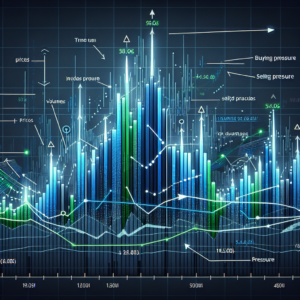
Cyclical Analysis in Trading
When it comes to trading, understanding market cycles and using cyclical analysis can be a powerful tool for making informed investment decisions. Cyclical analysis involves studying patterns, trends, and recurring cycles in various financial markets to predict future price movements. By identifying these cycles, traders can gain insights into potential opportunities for buying or selling assets.
Why is Cyclical Analysis Important?
Market cycles are a natural occurrence in financial markets, driven by various factors such as economic conditions, investor sentiment, and market psychology. By recognizing and analyzing these cycles, traders can anticipate potential turning points in the market and adjust their trading strategies accordingly.
Cyclical analysis can be particularly useful for long-term investors who aim to capture major market trends and ride them out for substantial profits. By identifying the current phase of the cycle, traders can determine whether it is a favorable time to enter the market or if it is better to wait for a more opportune moment.
The Different Phases of a Market Cycle
Market cycles typically consist of four main phases: accumulation, expansion, distribution, and contraction. Understanding these phases is crucial for successful cyclical analysis.
1. Accumulation
In the accumulation phase, prices are generally low, and market sentiment is pessimistic. Smart money investors start accumulating positions, anticipating an upcoming market rally. This phase is characterized by low trading volumes and a lack of public interest in the asset.
2. Expansion
During the expansion phase, prices start to rise as demand increases. Positive news, improving economic conditions, or favorable market sentiment often drive this phase. As prices climb, more investors become interested, leading to increased trading volumes and a general sense of optimism.
3. Distribution
The distribution phase occurs when prices have reached their peak, and smart money investors start selling their positions to take profits. This phase is characterized by high trading volumes and increased volatility as market participants try to exit their positions. Negative news or deteriorating economic conditions may trigger this phase.
4. Contraction
The contraction phase follows the distribution phase and is marked by falling prices and a general sense of pessimism in the market. Investors become cautious, and trading volumes decrease. This phase may be driven by negative news, economic downturns, or a lack of market catalysts.
How to Apply Cyclical Analysis in Trading
To effectively use cyclical analysis in trading, consider the following steps:
1. Identify the Current Phase
Start by determining which phase of the market cycle the asset is currently in. Look for signs of accumulation, expansion, distribution, or contraction, such as price patterns, volume trends, and news events.
2. Use Technical Analysis Tools
Apply technical analysis tools, such as trend lines, moving averages, and oscillators, to confirm the identified phase and potential turning points. These tools can help you spot key support and resistance levels and provide additional insights into market dynamics.
3. Evaluate Fundamental Factors
Consider fundamental factors that may influence the market cycle, such as economic indicators, company earnings, geopolitical events, or central bank policies. These factors can provide a broader context for your cyclical analysis and help validate your trading decisions.
4. Develop a Trading Strategy
Based on your cyclical analysis, develop a trading strategy that aligns with the identified phase. For example, during the accumulation phase, you may consider buying assets at attractive prices, while during the distribution phase, you might focus on taking profits or short-selling.
5. Monitor and Adjust
Continuously monitor the market and reassess your analysis as new information becomes available. Market cycles can change quickly, and it is essential to adapt your trading strategy accordingly.
Conclusion
Cyclical analysis is a valuable tool for traders to understand the dynamics of market cycles and make informed trading decisions. By identifying the current phase of the cycle and using technical and fundamental analysis, traders can increase their chances of success and capitalize on market trends. Remember, no analysis method is foolproof, and it is crucial to combine cyclical analysis with risk management techniques to mitigate potential losses.





